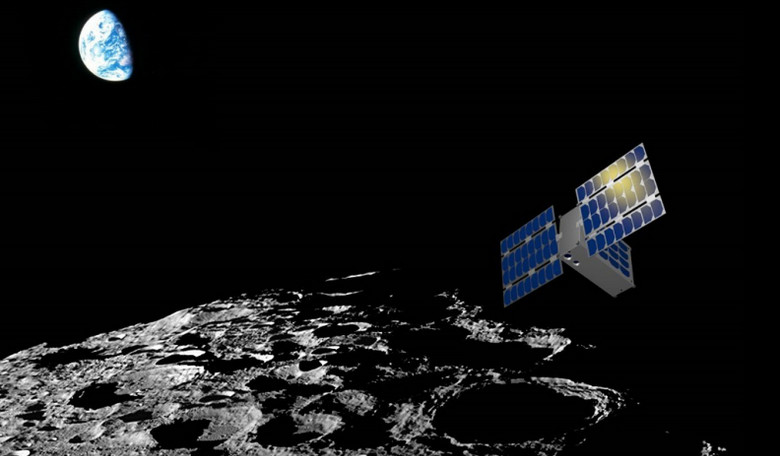How much water is on the Moon and does it migrate? These are two questions NASA is hoping to answer with the aid of current technology that it plans to shrink and send in a CubeSat the size of a large shoebox, so that scientists can study the lunar surface.
Our perception of the Moon has changed considerably over the years from a cold, desolate, dry body to one that is still cold and desolate, but one that harbours substantial volatiles, specifically water and hydroxide, both within and on the surface.
Many have suggested that in order to make the next step to colonising another planet, we must first be able to set up home on the Moon and volatiles such as these could play an important role for any astronauts that find themselves living in proposed lunar bases.
There have already been many missions to the Moon so far to study its chemical constituents – Chandrayann-1, the Lunar Reconnaissance Orbiter, and the Lunar CRater Observation and Sensing Satellite – but the first hint that water could be present at both lunar poles came in 1994 with the Clementine mission.
Now, NASA are hoping to shrink a laser spectrometer, known as the Lunar Ice Lidar Spectrometer, or LILIS which has already been successfully used in other planetary missions to fit inside a six-unit CubeSat. Unlike the original instrument it will be based on, LILIS would include a multi-band spectrometer to look at multiple wavelengths instead of just the one.
“Understanding volatiles in the solar system is a major planetary-science objective for NASA,” said scientist Noah Petro. “We believe that the best-suited instrument to answer where these volatiles exist and their possible movement is a laser spectrometer that measures surface reflectance at several wavelengths. The benefit of this approach is that by using an active instrument, we can measure in areas that are not illuminated.”
Like all chemical compounds, water absorbs light at specific infrared wavelengths – in this case, 1.6 and 3.0 microns — and by carefully tuning the instrument’s detectors to those wavelengths, scientists would be able to detect and then analyse the level of water in LILIS’s path. The more water along the laser’s path, the deeper the absorption lines.
And, because the laser is also the instruments own light source, the mission would be able to operate day and night, regardless of sunlight conditions.
This CubeSat mission concept, which is called the Mini Lunar Volatiles Mission, or MiLUV for short, could also study the Moon’s permanently shadowed regions that haven’t seen sunlight in perhaps a billion years or more, to show if and how surface volatiles vary as a function of lunar time.
Aside from their size advantage, CubeSats are playing an increasingly larger role in planetary exploration, technology demonstration and scientific research as they can hitch a ride into space on already scheduled launches, thus providing great science returns at a lower cost.
NASA has already backed the Microwave Radiometer Technology Acceleration (MiRaTA) CubeSat project that will demonstrate whether a small satellite can reliably collect (Earth) weather data and back in August of this year, NASA also announced another potential mission to look at mysterious absorption features in Venus’ atmosphere. Called the CubeSat UV Experiment, or CUVE, the mission would investigate Venus’ uppermost cloud layer using ultraviolet-sensitive instruments and a novel, carbon-nanotube light-gathering mirror.











